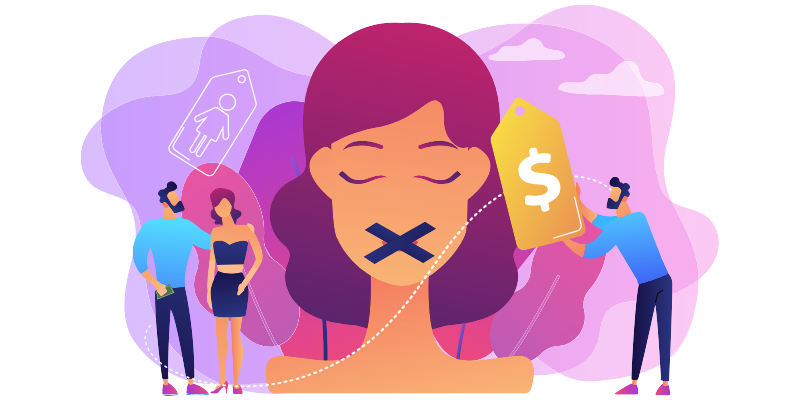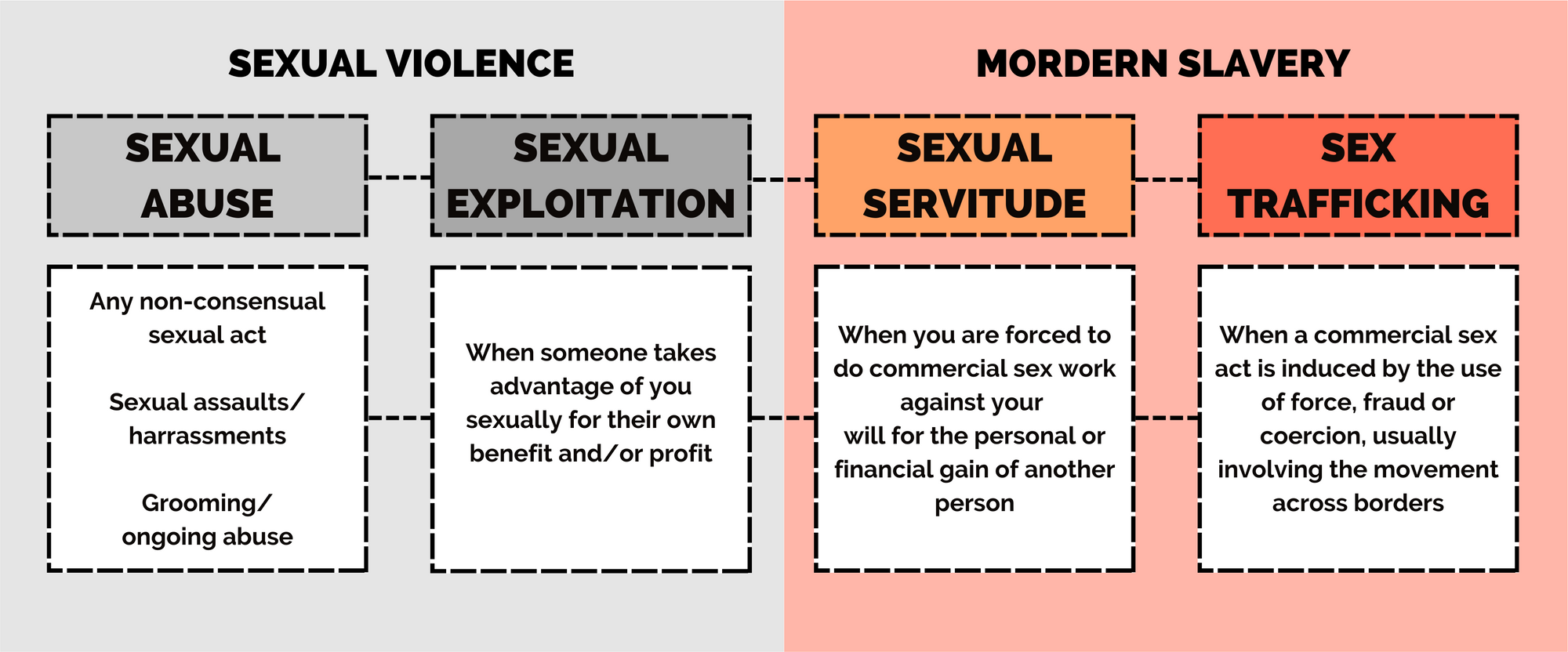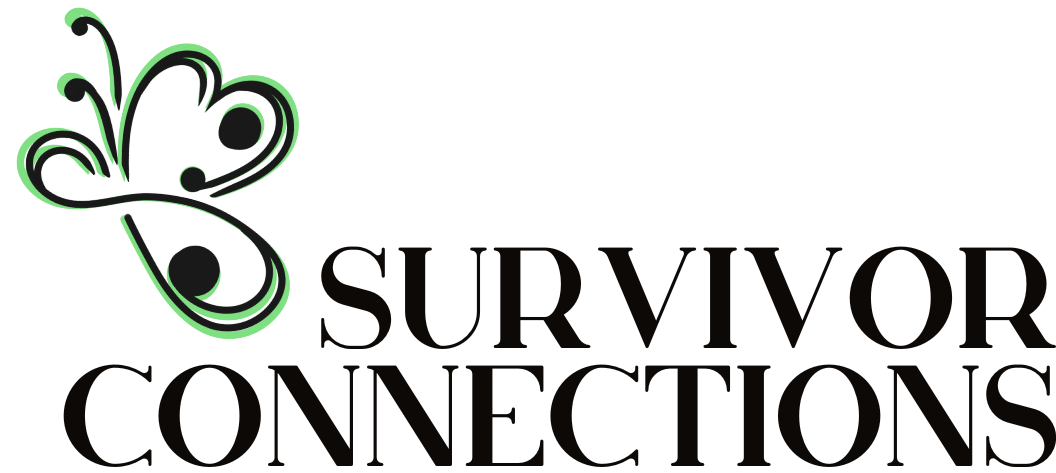Exploitation in the Sex Industry


Misconception:
"All sex work is trafficking"
It is absolutely NOT – Safe, autonomous, consensual sex work is not trafficking.
The idea that all sex work is trafficking comes from criminalised models, where sex work is not seen as real work. Under decriminalised models, if someone is forced to do sex work against their will for the benefit of another person, that is considered illegal.

Types of sexual exploitation
Sexual exploitation is a spectrum of experiences starting with someone violating your sexual consent for their benefit, all the way through to forcing you to do commercial sex work against your will (sexual servitude) or trafficking you for sexual services.
Understanding how these experiences are defined, and fit into an experience of Modern Slavery is really important if we want to be empowered to live free from exploitation.

Sexual Abuse
People can experience sexual violence in many ways. You might experience sexual harassment, be sexually assaulted, or experience ongoing sexual abuse. Sexual abuse is any form of violence that breaches your sexual consent.
Sexual Exploitation
Exploitation is a form of sexual abuse that adds an element of profit or benefit for the perpetrator. An example of this could be someone profiting from sharing explicit images/videos of you without your consent.
Sexual Servitude
Sexual servitude is when someone forces you to do commercial sex work against your will. This could be online or in person. If you are not free to stop providing sexual services or are not free to leave the place where you are providing those services because of threats, force, deception or coercion, that is considered sexual servitude in NSW.
Sexual Servitude in New South Wales is outlined in State legislation, as well as Federal legislation. It is outlined in the Crimes Act 1900 Section 80B, and can be reported to NSW Police. Click on the box below to learn more:
Sexual servitude under the Act:
- For the purposes of this Division, sexual servitude is the condition of a person who provides sexual services and who, because of the use of force or threats:
(a) is not free to cease providing sexual services, or
(b) is not free to leave the place or area where the person provides sexual services. - In this section:
sexual service means the commercial use or display of the body of the person providing the service for the sexual arousal or sexual gratification of others.
threat means:
(a) a threat of force, or
(b) a threat to cause a person’s deportation, or
(c) a threat of any other detrimental action unless there are reasonable grounds for the threat of that action in connection with the provision of sexual services by a person.
https://legislation.nsw.gov.au/view/html/inforce/current/act-2018-030#sch.2
Sex Trafficking
Many International definitions of sex trafficking are similar to sexual servitude. However, in Australia, definitions of sex trafficking still focus on movement across borders. Examples of this could be:
- Someone being deceptively recruited for studies or work from overseas and then being forced to do sex work.
- Someone moving you state to state or overseas to work for them in a situation in which you are being forced to do sex work against your will.
- Many people also refer to any commercial sex work involving children, as trafficking.

How do we hold people accountable for assaulting and abusing sex workers?
A decriminalised model for sex work is a harm minimisation strategy. It allows sex workers to access help when they are in trouble and aims to protect them from discrimination and assaults.
At Survivor Connections we believe that people/entities who abuse and/or assault sex workers should be held accountable for their actions. At minimum, they should be prevented from continuing to hurt people.
Any establishment or person who assaults, threatens, coerces, or engages in acts constituting sexual servitude should be held accountable by the law.
This is a human rights issue, and the basic human rights of sex workers should be protected in the same way that every other person is.
Find out more about exploitation, human trafficking and modern slavery:


